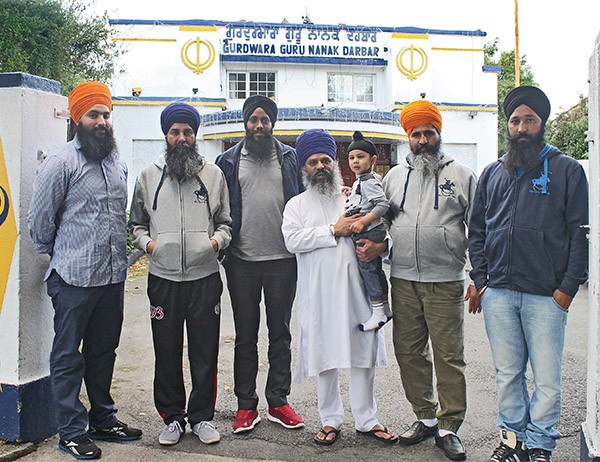
Nestled amidst the leafy suburban enclave of Serpentine Avenue is the gateway to a place of worship and communal gathering for Ireland’s Sikh community. The Temple of Gurdwara Guru Nanak Darbar is not awash with adornments or signs that demand attention.
The same building has been known as The Ritz, the Oscar Theatre, O’Neills Picture House, and The Astoria in its time. The Oscar theatre was bought in 1986 and since then it has been a Gurdwara Sahib. This now-modest venue is kept ready and waiting by volunteer devotees for those who wish to come and pray and meditate in the way of the Guru’s instructions of centuries past.
Sikhism, explains Kamal Deep Singh, “has its roots in the teachings of the 10 Gurus,” who lived in the 15th to 18th centuries. The teachings they laid forth have been solidified into a sacred text called Guru Granth Sahib, which Sikhs regard as the revelation of God.
When entering the main hall of the Gurdwara, the central piece and focus is the covered sacred text of Guru Granth Sahib.
As many people might be aware, Sikhs are quite distinguishable from other religious followers with their distinctive beards and turban (Dastaar). There are 5 ‘Ks’ that Sikhs observe at all times. One of these – Kesh – is not to cut their hair. Kamal explains that this is related to acceptance. “We don’t cut any of our hair because He’s the perfect creator. There is no need to alter myself to look better. I have to believe that what God has given me is good. If you have greed you go further to an extent.”
According to Singh, people have assumed Sikhs are Muslims or Hindus, due to the turban (or dastaar), even though followers of Islam or Hinduism do not wear the turban as part of their religious practice. Sikhism is quite distinct from these religions.
One of the central pillars of Sikhism established by the Sikh Gurus is the practice of Naam Jaap (or Naam Japo) – contemplation and meditation on the words of the Guru Granth Sahib – as an essential means to harness Godly qualities and merge back with the creator. ‘God’ is not a figure as might be portrayed by Christianity or Judaism.
Rather it is formless, omnipotent, and all pervading. The religious aim of a Sikh is to come to understand this ‘God’ directly by contemplation and good living.
Singh explains that the Sikh community have plans for a free meals service for the homeless. They are seeking help on making this happen, perhaps starting for a day or two per week at first. When asked about the funding about this initiative, Singh explains that when something of this nature is initiated the community responds. “By God’s grace, the congregation would respond positively. If such a good deed was done they never say no.”
Those who have heard of the Golden Temple, in Amritsar, India might know of the 24-hour feeding practices conducted there. Any visitor who arrives at the Golden Temple will be fed a meal, as they can partake in the free community kitchen and meal (Langar) that is a hallmark of all Sikh Gurdwaras worldwide. This same practice includes the Gurdwara of Sandymount, where anyone may visit and partake of the offer of a meal.
Singh explains the plan to NewsFour to expand this offering so that the Sikh community can help the homeless of Dublin. His initial enquiries have not yet borne fruit on the regulation about this service but they are actively seeking help and partners on how they could make this happen.
By Ferg Hayden



